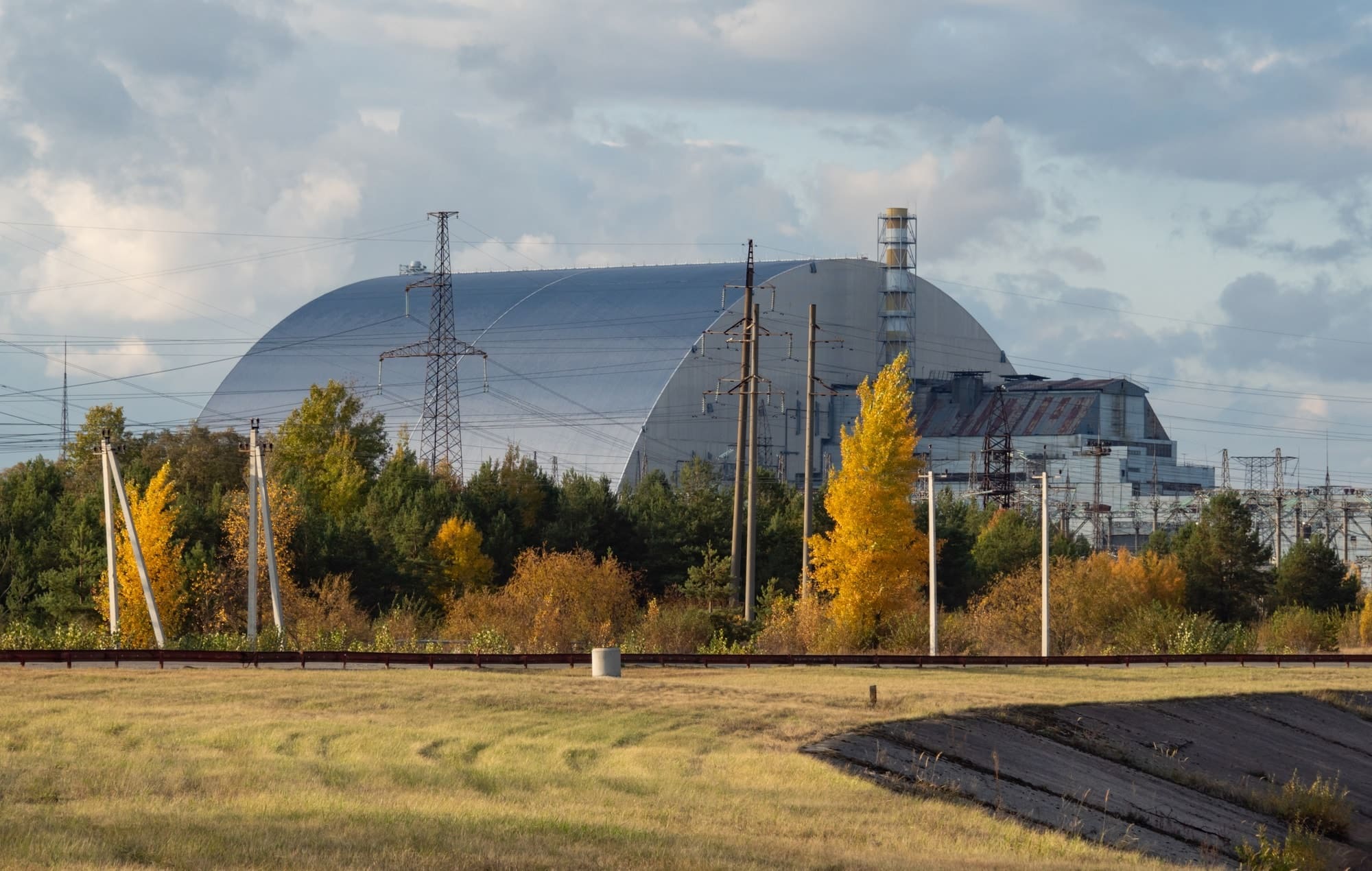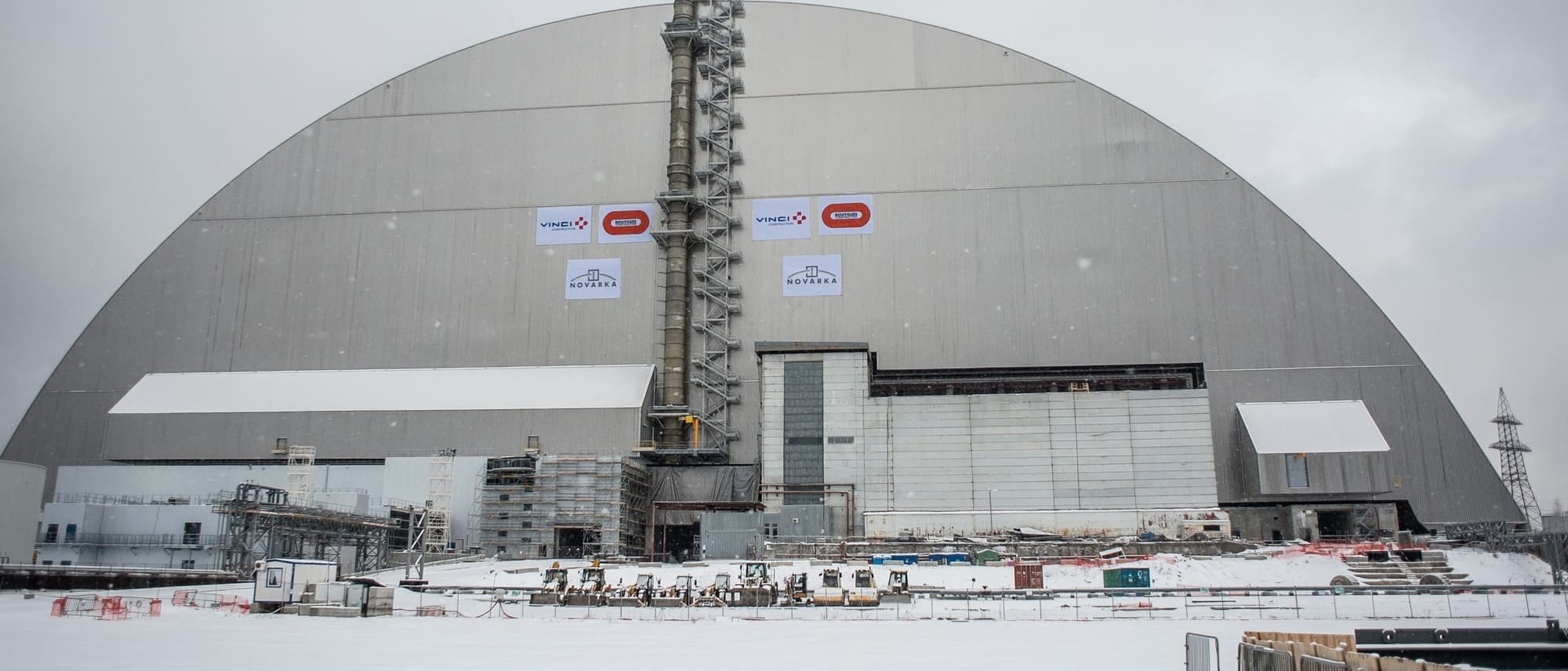The project’s unprecedentedly complex engineering and construction solution protects Ukraine and the rest of the world from the dangerous radioactivity at the Chernobyl Nuclear Power Plant that exploded on 25 April 1986.
At the time, the leader of the Communist Party of the Ukrainian Soviet Socialist Republic (SSR), Volodymyr Shcherbytsky, confusedly wrote “What does it mean?” in the Committee for State Security (KGB) report informing him of the accident, fire and high level of radiation at the Chernobyl Nuclear Power Plant.
The highest level of radiation was reported in the first half of the day on 1 May 1986. That was when the unsuspecting residents of the capital of the Ukrainian SSR were dressed up and marching in the streets of Kyiv to celebrate May Day.
Nowadays, historians think the Chernobyl disaster was “the straw that broke the camel’s back” and became the finale in a series of Soviets government blunders (in addition to the extremely unpopular anti-alcohol campaign launched by General Secretary Mikhail Gorbachev, the war in Afghanistan, other international conflicts and economic stagnation). According to KGB documents that were disclosed several years ago, anti-Soviet sentiment rose and national democratic movements became more active immediately after the Chernobyl accident. However, the most common questions sought the truth about the Chernobyl Disaster. What really happened? Who was to blame? What would be the environmental and human health consequences of the disaster? And most importantly, how can a destroyed nuclear power plant located in close proximity to the capital of Ukraine be made safe in the future? Because the Chernobyl Nuclear Power Plant continued to operate. It took more than 30 years for government officials, nuclear scientists, steelmakers and builders to find a decent solution for this problem.
Sarcophagus
Three weeks after the Chernobyl disaster, the construction of a sarcophagus started. It was a huge structure made of steel and concrete to protect the environment against radioactive contamination for the next three decades.
Throughout those years, the sarcophagus contained 200 tonnes of radioactive corium, 30 tonnes of radioactive dust, as well as 16 tonnes of uranium and plutonium. The sarcophagus became a sort of tragic monument to commemorate its builders, who had to work under extremely dangerous conditions. Over time, the Chernobyl accident released an amount of radiation commensurate with four hundred of the bombs dropped on Hiroshima and Nagasaki. During the construction of the sarcophagus, the crane cabins were simply clad over with lead: the builders had to work blindly, following instructions given by their senior colleagues who were supervising the work at a respectful distance. Tailor-made mechanisms were used to deliver building materials to the construction site.
From the very beginning, Soviet engineers expected the sarcophagus to last no more than 20-30 years. They appeared to be right. In 1996, experts stated that the deterioration of the reinforced concrete sarcophagus had become irreversible. It was decided to build a New Safe Confinement to cover the old sarcophagus. The Chernobyl Shelter Fund was established under the auspices of the European Bank for Reconstruction and Development (EBRD). The EU government and representatives of more than twenty countries expressed interest in sponsoring the construction project, which was funded by contributions from more than 40 countries and organisations by the end of its construction.
Meanwhile, experts were developing a range of creative solutions to extend the service life of the sarcophagus. For example, a specialised “stabilising steel structure” more than 60 metres in height was developed. Its pillars retained one of the reactor walls and the sarcophagus roof to prevent their collapse. In 2006, the steel structure was further extended to transfer up to 50% of the roof load to it.
Nevertheless, in winter 2013, background radiation in the area increased when a section of the roof at the Chernobyl Nuclear Power Plant collapsed. It became apparent that the existing sarcophagus was no longer functional and specialists reported that it was on the verge of collapse. Building the New Safe Confinement became an extremely critical matter.

New Safe Confinement
Work to implement the ambitious construction plans for the New Safe Confinement (NSC) began with the creation of the International Chernobyl Shelter Fund. As the EBRD recalls, Ukrainian and foreign specialists focused first on finding a concept for the future structure. The installation of infrastructure required for future construction was carried out in parallel, namely roads and railways, utility lines, monitoring systems and various specialised structures to ensure safe work at the Chernobyl Nuclear Power Plant. For example, an area where 1,500 people could change their clothes after work at the contaminated territory was rebuilt and outfitted with radiation protection equipment. It was needed to preliminarily inspect the condition of the emergency structures. Their further stabilisation had to be carried out under high radiation levels.
The NSC’s design was selected by means of an international competition. The contract for engineering and construction was awarded to Novarka, a consortium of the French construction companies Bouygues and Vinci.
The NSC is a giant steel arch-shaped structure. Its steel arches are positioned on two longitudinal concrete beams. The NSC is externally clad with three-layer sandwich panels. The inside of the structure is covered with polycarbonate.
To place the NSC’s size into context, the EBRD explained that the confinement could house the Notre-Dame de Paris (257 metres х 110 metres х 154 metres). The steel structures of the NSC weigh more than 36,000 tonnes. More than 2,000 tonnes of high-quality steel plates produced by Azovstal in Ukraine and more than 13,000 tonnes of plates produced by Metinvest Trametal SPA in Italy (both plants belong to Metinvest Group) were used to build the NSC, which is the world’s largest land-based movable steel structure.
Large parts of the arch were prefabricated and transported to the assembly site 180 metres away from reactor four. This assembly site was set up in close proximity to the Chernobyl Nuclear Power Plant in 2010-11. The assembly work began in 2012 and continued until 2016. The assembled structure was slid into place using a highly complex engineering solution consisting of rails, hydraulic jacks, lasers and other tools. This process took several weeks and final commissioning took several years, including connection and testing equipment, as well as sealing the NSC. It was not until July 2019 that the NSC was placed into service. Therefore, it took 23 years – from idea to operation – to build an object of such extreme importance for mankind.

A look into the future
The structural steel members of the NSC are strong enough to withstand severe weather conditions, even a tornado. Its sophisticated ventilation system eliminates the risk of corrosion. The EBRD guarantees that the NSC, the construction of which required US$1.5 billion in donor funds, will perform its protective functions for a minimum of 100 years (the overall project budget was US$2.15 billion).
It should be noted that the whole world was involved not only in the project’s financing, but also in its execution. In addition to Metinvest, companies from the US and other countries took part in the construction: US engineers built cranes, Turkish specialists clad arches and specialists from Holland performed installation work. This is no surprise, because the Chernobyl accident was recognised as the ugliest disaster known to man and its negative consequences posed threats to all life on earth for many years. Fortunately, the safe future of humanity is now reliably secured by the steel arches of the New Safe Confinement.
